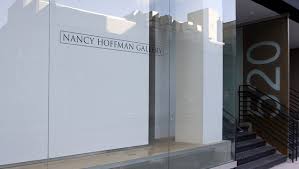I.
“No most gifted eye can exhaust the significance of any object.”
Thomas Carlyle, On Heroes
“Genius”.” Masterpiece”.
That’s my two-word review of Joseph Raffael’s latest exhibition of huge watercolors based for the most part on photographs of the mostly undomesticated out of doors.
What? You don’t like those words? Well, who does? They’re conversation stopping at the very least. Uncomfortable-making. Off-putting.
Sorry.
The two offending words came to mind as I was rereading Carlyle, and Joseph, unbidden, crossed my consciousness like a Perseid shower. Joseph and Thomas C. would have lived in a perfect understanding. Carlyle believed that History (we shall say History of Art) is created by very special Men-Heroes he calls them. These “kingly” leaders or (thinking of Raffael) artistic geniuses summon all before them and it is for the rest of us to play catch-up. So it is not a Movement of some kind, and it is not the Zeitgeist which moves things forward. Historical change comes from individual gestures. Pollock. Leaders who can put their stamp on things. Carlyle is in an opposite camp from an empiricist historian, like Taine. For Carlyle, as for J. R., the material world is saturated with religious feeling. Life has a basically spiritual meaning, if only men would heed it. The religious renewal he posits must come from within; we must rid ourselves of the symbols we rest on throwing away the husks the “adventitious wrappings”, the “hulls” and “earthly garnitures” in order to arrive at the naked mystery of things. “All deep things are song”, I read and “the poet has an infinitude in him”: he “communicates an Unendlichkeit to what so ever he delineates”. This comes pretty close to the spiritually saturated nature evidenced by Passage Way or Friendship’s Forest.
II.
Joseph’s paintings are Awesome.
What goes around, comes around. At least this is so in our field. At length, at long length after growing up three decades out of the limelight, Photorealism is about to be re-appreciated. Well, a lot of us wouldn’t mind being 30 again. Excepting Raffael and Chuck Close, the ones that head up my all-star cast depend on neo-classical stratagems: the way Bob Bechtle plants a figure before a car in front of a house; the way Dick McLean stations a horse and rider in front of a shed-row building; the way Ralph Goings “captures” a diner customer within interior geometries. Everything depends on carefully articulated planar recession, clean transitions, reciprocating part to whole composition. Meanwhile Close and Raffael have their own dependencies, “Romantic” ones. Of major significance here is the idea (it can most readily be extrapolated from Chuck Close’s early portraits of Friends) that Friendship is a main Content of Art. But the most important tactic these “romantics” share is the use of greatly inflated single images in order to stun the viewer into a temporary state of Awe. Brought up to your eye-level, a l’Audobon, a humongous Frog, an immense Owl confront you. The symbolic value of these messages (Metamorphosis/Wisdom) isn’t negligible. Yet what’s mainly at stake here is the proposition that Scale is Content. Can be anyway. And it can be that technique is Content, too, as I observed in my Laguna Beach catalog apropos of Joseph’s work back in ‘81. Beyond this there’s something special about Joseph’s paintings, from the great Indian Heads of the late 60s all the way to his recent watercolors like Friendship’s Forest (with its direct nod at our mutual friend Steve Kaltenbach’s Stoned Maple, 1973). That specialness has to do with the fact that any major Raffael will serve to vindicate Andre Breton’s early Surrealist dictum that “Only the Marvelous is Beautiful.” Which is not true of the paintings of Bechtle or Estes, or any of the Photorealists whose work reworks Neo-classicism. In Raffael we can see that only the Marvelous is Beautiful. And as you or I or we and even “they” think through it, it becomes clear that Breton’s apercu is anticipated in Burke. As the tinkle, tinkle Papa Hayden Neoclassicism of his own era flagged, and Romanticism geared up to roar by like Beethoven, Burke located the Sublime at the crossroads of the Beautiful and the Awesome. Raffael takes his stand at this intersection, and has stayed there from about the time he traded Joe for Joseph.
III.
Wholeness Harmony Brightness
In recent writings I’ve suggested touchstones which may apply to Raffael’s art: like the ones provided by Stephen Dedalus or rather by Joyce or rather by Aquinas. “Tria requiuntur” we read in Portrait of the Artist, “integritas, consonantia, claritas”. A watercolor like May 2003, characteristic Joseph painting of blossoms, must read as one thing , must read as a whole separate and distinct from all the rest of the world. To this end (like Seurat, for instance), Raffael has painted in an interior border, a border within the border. He is making sure that we take in the piece as a single thing , not to be confused or conflated with its surroundings. Next (let’s take Passageway , 2003 this time) a painting must (despite its incredible daunting complexity) demonstrate a harmony of all its parts, each part to each and each part to the circumscribing whole. Raffael specializes in this legerdemain; it can’t be easy but he makes it seem unforced and natural. Finally, Aquinas says, a work like Spring 2003, must be radiant. It must shine with a claritas that cannot be told, as it does here: a full panoply of light, bright hues singing in ensemble with an operatic intensity that once again, beggars description. This flower is on consignment from God. (Ouch! Did I just say that?) As I say in my Laguna catalog “Raffael paints no flowers of evil.”
Right here at claritas, the touchstone of radiant spiritualized light is where JR parts company with what we might call the artistic proletariat. He can bring it off. The average artist can’t.
The familiar touchstones pink/blue = Flesh/Spirit are at work in Raffael’s new paintings in much the way they operated in the Hydrangea of 30 years prior. The fluid way JR handled oil as a translucent film of ever so thin skeins, filament and washes put me in mind somehow of Paganini. People thought he was possessed. You can feel in a Raffael his obsessive pursuit of every trick of light and leaf, every dancing reflection from a constantly shifting surface. In the great Water paintings or the marvelous (!) Koi Pond series he works in dilute washes of oil paint with a virtuosity that one had to marvel (!) it could be done at all. “Like Gold to airiee thinness beat”, the line is Donne’s and the reference is to the exquisite long drawn-out thread of sexual sensation between lovers lovemaking. In painting after painting Raffael brings off this ultimate refinement. Let me say it again. You just had to wonder how it could be done at all, much less taken further (as JR does in Eternal Pond).
IV.
Never Tempted? Well, hardly ever.
Raffael pioneered the big watercolor. There was an old saw in art schools. It can’t be managed. A large watercolor will just fall apart. The medium won’t sustain the square footage. Raffael went ahead and occupied the territory. Now there are imitators galore, a whole roll-call. They ought to try it the Joseph way; I mean his bordering his large watercolors with strips of prismatic, kaleidoscopic, never-never land color. This device isn’t merely decorative; it binds the piece together. Raffael is never tempted toward impasto; he avoids gouache or any opaque effects whatever. Transcendent and translucent, brilliant as stained glass, these watercolors sail you right out of your shoes. It’s hard to believe, but it looks like JR is getting better.
The shift to watercolor portended major changes in the personal realm. Joseph and his second wife, Lannis Wood left California for the French Riviera and a series of paintings of Lannis in her garden followed hard upon. The wives or girlfriends of artists have to put up with a lot of modeling but one consolation is that when we ask the question, what were women like in such and thus a country in thus and such a period, the answer comes back, Well of course they were like Mrs. van Rijn or Mrs. Bonnard or perhaps like Mrs. Raffael. This was surely a fine honeymoon gesture. Fudging only a little! JR conflates Lannis’s face with Botticelli’s Primavera. Often in this series Lannis is virtually subsumed by a shower of leaves and blossoms, and by decade’s end Lannis has disappeared into her garden; only she is still there! Lannis and her garden become one; there is also the consideration that Lannis’ last name is Wood. Joseph as we’ve seen, is not averse to painting a Wood or two or three. Note as well Joseph’s epic tribute to his late father-in-law, Cyril Wood, (The Open Window:Homage to Cyril Wood 2001) a view from an interior into a garden outdoors which seems continuous with it. Raffael may have, in a neighborly way borrowed the composition from Bonnard. In any case art history is replete with paintings which testify to the curious proposition that we are, as human beings, both inside and outside at every conscious moment. And it’s sometimes hard to tell where our inside stops and our outside begins. In Cyril Wood, JR has raised the question beautifully, if somewhat over determinedly. Over a long career Joseph has shown a consistent concern (cf. Release, 1970) with how the Soul lets go of the body it’s trapped in. The problem much exercised Michelangelo. For Cyril Wood provides a Q.E.D. resolution to the issue. The artist is quite comfortable with the term “soul”. No one would question whether the large animals he painted in his California period (the Lion, Seal, etc.) are endowed with souls. Nor, that (from his earlier period), the poor monkey stuffed into a space capsule and wired for scientific research, is about to suffer the wrong kind of release to the heavens at the hands of his human tormentors.
V.
Nature Natured
Among Photo-Realist painters Raffael is probably the least concerned with the photo qua photograph. Since California days, when he began to take his own slides, Raffael has mainly sought a suitable gestalt through which he can freely pass his feelings, which are always glamour-prone and often aim for the exquisite. His many pictures of the natural world and its denizens read more in terms of Natura-naturata (than of Natura naturans). In a way in works like Mandala Bouquet we deal, in Joseph, with a high fashion sensibility that nonetheless packs a stiff punch. We are not required to reason why this should be so, but we think it has to do with how incredibly crafted these paintings are.
VI.
Ommmm Ommmm Ommmm
That I know so little about the whole realm of Eastern piety is a mark against me. I’ll take the word of friends who maintain that staring at a Raffael, you can readily achieve a trance state. Others speak of a painting as a kind of visual-mantra. I don’t doubt this, I just can’t get behind it myself. I am a meditation 4-F. When, occasionally, Joseph would land on my shores the first thing he’d do is go out on the lawn,sit crosslegged, and meditate for 75 minutes. Ssshhh. A rattlesnake tak-tik-tak-tik, tak-tik, an art critic’s cane tok-tok-tok-tok, the pop of a champagne cork are a few of the noises that wouldn’t disturb Joseph.
Well intentioned friends mindful of my Satori-less existence have counseled me to breathe in, breathe out. “Sit in front of this painting” (Water painting #3). “Now control your breath”. Doesn’t work for me. I keep thinking stuff like what a painting of paintings this is! How am I going to write about it without going all tautological on the esteemed reader? I am just no good at meditation. I know I’m going to miss something the minute I shift into mental overdrive. I’ll come back to the other world and find out Bush has invaded _______ a country where people hate us.
It’s no great puzzlement why JR should be drawn to Asian culture and Asian art,where by and large beauty rules and the contemplative wins out over action. There is an easy jump from pictures like Mandala Bouquet to the “priceless” “precious” quality in a Ming jar or a Sung porcelain, or a screen like Ogata Korin’s Chrysanthemums Beside a Stream (Cleveland Museum).
VII.
That Fine Italianate Hand
Raffael works with small brushes and his stroke is under the control of his hand and fingers the very ambassadors of his heart and intuition and the very vehicles of his Ruskin-like belief in the spiritual nature of Sight. There is such a thing in Sports as Natural Ability-that is what Joseph has in his painting surpassing all competition. The trickly runny quality evident even in his earliest exhibited work brought to more than one mind the jewel-like encrusted gobs of paint which over-determine the surfaces of Gustave Moreau. By the mid 80’s J.R. had so to speak caught up to himself in oil. He had no further to go. The change over to water based paints opened it all up for him once more, and he is still going strong. It still boggles my head-screwed-on-backwards-art- historian’s mind how Joseph can operate the way he does in a medium so totally intolerant of mistakes. Don’t try this one at home kids!
VIII.
I am Nature
In the oils Joseph used to start in the bottom left corner and just work his way methodically across like a starving locust. With the watercolors he takes an appropriately freer approach, letting his intuition suggest a way “into” the painting and then starting and stopping spontaneously, a spontaneity which somehow carries into the finished painting. To the gallery goer who is stunned by the apparent genius of these works, I can only repeat don’t lose sight of the extraordinary CRAFT that lies behind every painting that leaves Joseph’s hand. The patient tracing of the image, the laying in of under-tints and colors-all this is done by the reclusive artist himself sans studio assistants. A further consideration obtains. Any painter is locked into a certain solipsism; take Roses Reverie, 2000, a smallish work which perhaps owes its “poetic” quality to a slender volume of Gaston Bachelard J. R. had in hand that winter.To be sure, he is painting a few flesh colored roses against a spiritualized blue velvet ground; at the same time though he paints himself; there is ontologically speaking a painting behind every painting; it’s a matter of identity. There is a sense in which J.R. not only bypasses the photograph as photograph but he also is dismissive of the image itself. You come to realize he is painting himself; he is in a loop; here we go loop de loo. My teachers Wellek and Wimsatt used to talk about an aesthetic of organicity, like Ruskin’s, in terms that make Creation an internal act of intuition and imagination. Thus Pollock’s famous “I AM” is a direct descendant of Ruskin and Carlyle. And J.R. descends from Pollock.
In a Raffael, what you can find, independent of the imagery, are a myriad of short darting unforeseeable strokes and stroke-clusters that certify: This is a Raffael, accept no substitute. When, as in the surprising Self-Portrait, 1985 he does not subordinate this welter-thicket of “DNA”-like free marks to the image, but lets them roam the picture plane, we begin to understand how complex Raffael’s take on reality actually is, how un-PollyAnna-ish his dead serious effort to find images that will heal and transcend. He is in fact more Pollock than PollyAnn.
IX.
Let Magic Reign
Bruce Nauman is right: Remember? The true artist helps the world by REVEALING MYSTIC TRUTHS. For the purposes of our argument here the true artist is likely to be a Romantic like Raffael rather than a geometer or a Neoclassicist. For Shelley, unheard sounds were sweeter. In Coleridge’s theory, Truth was a “Divine ventriloquist”, speaking thru whoever was handy, such as this boy from Brooklyn. All theories of artistic Inspiration, of the artist taken out of himself, made use of as a medium for Divine Wisdom, all such theories (Plato’s Ion, for instance) would be a prete a porter fit for Joseph Raffael.
“When I make a painting it is as tho I do a good deed”. I’m fond of remembering that Gauguin, the great giver of color, taught this extra-ordinary truth to Van Gogh whose self-portrait is quoted in J.R.’s Biography just above J.R.’s portrait of their dog ‘Beauty’; symbol of ever-requited Love. As a do-er of good deeds, pictorial or for real, J.R. stands high on the list of anyone who has the pleasure of his friendship. When I think of him I think of a man who honored his parents (Padre morto) in his art. I think of a man who honored his children (Matthew’sBranch ). Of a man who honored his father-in-law, (For CyrilWood). Of a man who honored his painter friend Juan Gonzalez in (Orchids for Juan G.) I think, good reader, of a man who represented his wife as the Goddess of Springtime in the (Lannis in Sieste series), a man for whom to have and to hold is no idle formula and omerta not a corrupted ideal.
If my account of Joseph makes him out to be a paragon, so be it. One of the things I admire most in J.R.’s work is the strong sense of caritas that shines forth from Biography or “The Open Window: Homage to Cyril Wood, 2001”. This charity of Joseph’s has nothing to do with handing out $ to the needy, tho’ Joseph is not behind hand in that, It is Charity in the sense, the testamentary sense, of an encompassing Love for all creation
X.
” But grant for a moment, that there is a realm beyond the senses…” Rilke, Letters, 1915
By the way, good people, Raffael is in fact a reader like you and me. He’s a pretty clear writer as well. Not all painters are. Just the other month J.R. recommended the latest Philip Sherrard book on the place of the Sacred in a world blasted from within, our world. It’s a useful volume to have on call as you approach Joseph territory. I always get around to saying this, here it is: If there is no meta-realm; if the Supernatural does not exist; if the Spiritual plane is a locus spurious; if the Divine itself is no more than a wishfulfilling self deception; if all these Ifs, then J.R.’s paintings (and everyone else’s) amount to no more than quite expensive wall-coverings. But this is America, patriotic reader, and-so they tell us- we are a religious nation and there is a whole movement, the Hudson River boys, who see the hand of the Creator in every leaf and waterfall and beehive. The first and probably the best of this bunch is Thomas Cole, who peopled the upper reaches of his enormous landscape-canvases with see-through-figures of God the Father and his retinue. One of the last of ‘em George Inness, a Swedenborgian transcendentalist, painted trees that seem unanchored to terra firma; they yearn heavenward; like Cole a great colorist, Inness held conferences with angelic presences. And a moralizing genre painter of Cole’s vintage, Wm. Sidney Mount, went everyone one better by conducting an epistolary correspondence with Rembrandt which we are most thankful to have, given that there are barely a handful of van Rijn letters, most of which deal with the rent-money, stuff like that. In our own day and place, Steve Kaltenbach has usually kept at least one foot in the metaphysical; the portrait of Steve’s Father on his deathbed is a striking instance of how photo-realism can be adapted to suggest an otherworldly Presence. But in the long history of American art from Cole to Church and Bierstadt all the way down to Ed Carrillo, Nathan Olivera, and Kaltenbach perhaps no painter has staked so much on the Reality of the meta-world as Joseph Raffael. As I write, there is an heroic stand-off in the Butler Museum of American Art between the greatest, most spiritual painting I’ve ever seen by Julian Stanczak and J.R.’s giant Papermill Creek. The two painters were classmates under Albers. Julian Stanczak wasn’t then, and isn’t now, any match for Joseph.The J.R., so to speak, simply OVERWHELMS him. J.R., of course, wouldn’t see this confrontation in the Museum in terms of a test.
In a general way, anyhow, Joseph thinks most student on student influences are superficial. He does retain one friend from Albers-days, Richard Ziemann who has been quietly making his art all these years in back-state Connecticut; the two men are still in touch. There was a student who influenced Joe Raffaele, reader; we know him now as Joseph Raffael. From at least as early as his artist-statement for the 1967 Sao Paolo Biennale, J.R. has stressed the need to get inside yourself; the artist should withdraw within. Essentially he would agree with Pindar who in Edith Hamilton’s paraphrasing, feels that “The educated man is a twilight man; true merit comes from in-born glory”. Arthur Schopenhauer is on the same train of thought. Acquired characteristics are dismissable. He praises the Brahmin philosophers who “express the unalterable fixity of innate character in a mystical fashion.” This opens the door not merely to Plato and the doctrine of innate Ideas, but to Calvinism and to St. Paul; in other words to predestination. Teddy Atlas, J.R’s homeboy sez: You can teach a boxer fancy footwork and to stick a jab, but big punchers are born not made. For Schopenhauer every real value is metaphysical, a priori, and lies innate; and the source of real power is not a mere phenomenon but is established once and for all as the very thing-in-itself, das Ding an sich. Experience”, Schopenhauer adds, “teaches the same lesson to all who can look below the surface.” And should you look beneath the surface, dear reader, you are certainly going to see those Raffael Koi.
Genius is such a hard word to feel comfortable using; so is Masterpiece. But those are the very words one must fall back on when dealing with J.R., or not deal with him at all. Nor is it at all explicable how he can be getting better. I think metaphorically of J.R. traveling pure North. (Not always, but) generally speaking, the further North you get the higher quality the Indian basket, the tighter the weave, the subtler the color. That is where Joseph is right now. He’s tightening the weave and looking at his compass to see when he will run out of North.
John Fitz Gibbon
Pilot Hill, 2003
©John Fitz Gibbon
Catalogue Joseph Raffael Exhibition, Nancy Hoffman Gallery, 2003
This essay is reprinted with permission of the author.





